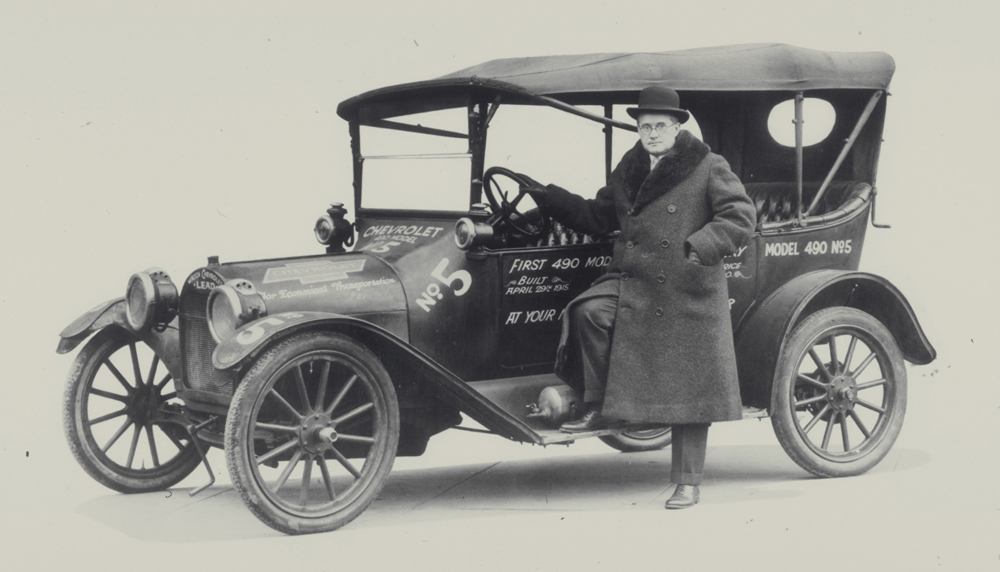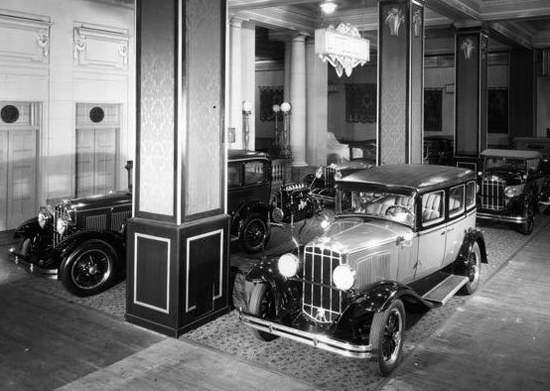|
|
|
|
|
The enigmatic Durant was an interesting character. His biographers portray him as a magnetic industrialist in the spirit of the early 20th century. Both charming and smart, Durant was boundlessly enthusiastic and endlessly open to new business ventures. Walter P. Chrysler once said of Durant's legendary magnetism that he could charm a bird off a tree. Durant was intrigued not only by Chevrolet's performance as a race-car driver. Louis' fine French-sounding family name sang of marketability to the entrepreneur. When the irrepressible Durant was ousted from GM in the midst of a 1910 financial crisis, he set out to re-enter the auto industry without missing a beat. Soon, he had an arrangement with Louis Chevrolet to build a car bearing the well-known racer's name. Just as in 1904, when Durant had stepped into the driver's seat of David Dunbar Buick's ailing auto company, the industrialist secured rights to the brand name that came with the agreement. On November 3, 1911, the Chevrolet Motor Car Company was incorporated. One year after the Chevrolet Motor Car Company was established, the first car to bear his name—a thoroughly contemporary, powerful and luxurious car—rolled out of a pilot factory in Detroit. This $2,100 Chevrolet was introduced as the Type C Six for 1913. Durant's plan for the Chevrolet automobile differed from that of his partner. He envisioned the Chevrolet brand on an inexpensive car that would offer significantly more value than the volume leader of the period, while selling for only a bit more money. The four-cylinder "Royal Mail" roadster and "Baby Grand" touring car models Durant introduced at $750 and $875 respectively in mid-1913 set Chevrolet on the road to achieving this goal. In late 1913, Durant introduced his $490 Chevrolet 490 for 1916 into the low-priced car market.
Louis Chevrolet felt his influence slipping away, and perhaps the legendary 'cigar/cigarette argument' between him and Durant that abruptly ended their partnership was inevitable. Before 1915 was out, Durant leveraged the strength of his Chevrolet company stock to effectively retake control of General Motors. In 1918, Durant officially merged Chevrolet into GM. However, the ebullient empire builder would lose control of GM yet again in 1920...leaving it to others to build the Chevrolet brand into the auto industry leader he'd intuitively sensed it could become. In 1919 General Motors was one of the largest American industrial enterprises, but Durant exercised little control over its operation; General Motors was too decentralized to be effective. When the Panic of 1920 occurred, Durant was overcommitted in the stock market. He tried unsuccessfully to support the price of General Motors stock; he was forced out of the company in 1920. Durant was a pioneer in the automotive industry, and his most notable creation, General Motors, has dominated the automobile market since. Some of his chance ideas, such as the entry of General Motors into the manufacture of refrigerators, were highly successful. However, Durant never succeeded in organizing and administrative structure adequate for the giant enterprise he founded, and the task of converting General Motors into an enduring monument was left to his successors. Billy Durant had lost control over General Motors in the course of the 1920's depression. His company and personal finances were ruined. He used to say: "Money? What is money? It's only a passing pleasure. Human beings are born with nothing, and they leave this world with nothing." Thanks to this attitude he regained courage and reactivated his business acumen and founded "Durant Motors". William "Billy" Durant died in New York City on March 18, 1947. nearly broke at age 85.
|
|
|
|
Durant co-founded a truck-making subsidiary, Mason Truck, and also acquired numerous ancillary companies to support Durant Motors. In 1927 the Durant line was shut down to retool for a brand new modernised car
for 1928, re-emerging in 1928 with Durant, Locomobile and Rugby lines in place, and dropping the Mason Truck and Flint automobile lines and top-selling Star car in April 1928. In 1929 Locomobile went out of production. 1926 Locomobile
1928 Locomobile
1919 Locomobile
|
|





